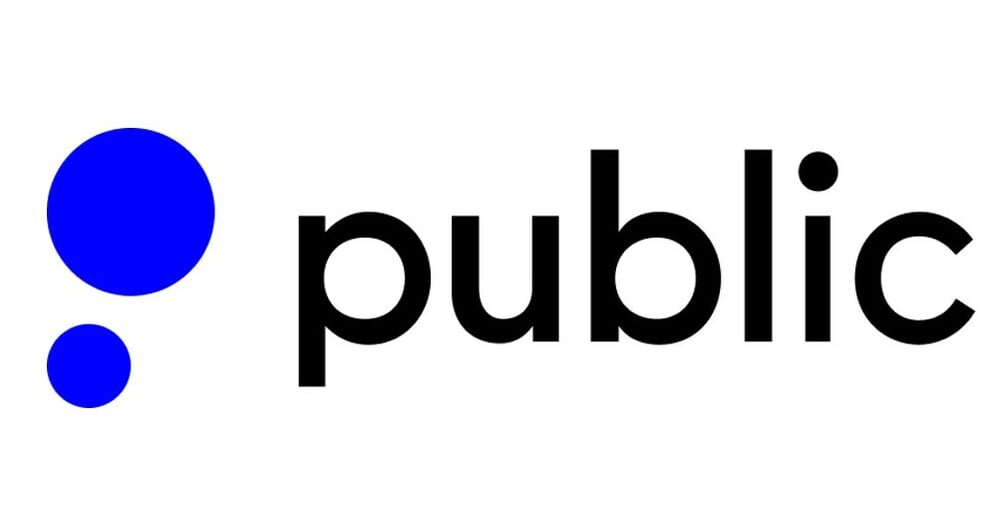How to Start Investing: A Beginner’s Guide
To get started investing, pick a strategy based on the amount you'll invest, the timelines for your investment goals and the amount of risk that makes sense for you.

Many, or all, of the products featured on this page are from our advertising partners who compensate us when you take certain actions on our website or click to take an action on their website. However, this does not influence our evaluations. Our opinions are our own. Here is a list of our partners and here's how we make money.
The investing information provided on this page is for educational purposes only. NerdWallet, Inc. does not offer advisory or brokerage services, nor does it recommend or advise investors to buy or sell particular stocks, securities or other investments.
Learning how to invest can be a valuable skill, no matter what the stock market is doing at any given moment.
As a newbie, you might also have a lot of questions: How much money do you need to start investing? How do you get started? What are the best investment strategies?
Our guide distills the basics into six easy steps to help you start investing this year.
1. Start now, even if you have to start small
Investing as far in advance of your goal as you can is one of the best ways to see solid returns on your money. Compound earnings, which occur when your investment returns start earning their own return, allow your account balance to snowball over time. The longer you stay invested, the more compound earnings you might see.
How compound earnings work: Let's say you invest $200 every month for 10 years and earn a 6% average annual return. At the end of the 10-year period, you'll have over $32,000. Of that amount, roughly $24,000 is money from those $200 monthly contributions — $8,000 plus some change is interest you've earned on your investment for merely parking it in the account to grow over time.
If you’re hesitant to invest because you're unsure whether your contribution is enough, focus instead on what amount feels manageable given your financial situation and goals, and start with that. The important thing is to build the habit. You can always increase your regular contribution amount over time.
Investing with smaller dollar amounts is also easier than ever. Many brokerage firms offer low or no investment minimums, zero commissions, and the ability to buy fractions of stocks for a cheaper price instead of the whole share. There are a ton of other investments also available for more affordable amounts, such as index funds, exchange-traded funds and mutual funds.
» Curious to see how much your money could grow? Try our investment return calculator
NerdWallet rating 4.8 /5 | NerdWallet rating 4.6 /5 | NerdWallet rating 4.5 /5 |
Fees $0 per online equity trade | Fees $0 | Fees $0 per trade |
Account minimum $0 | Account minimum $0 | Account minimum $0 |
Promotion None no promotion available at this time | Promotion Earn up to $10,000 when you transfer your investment portfolio to Public. | Promotion Get up to $700 when you open and fund a J.P. Morgan Self-Directed Investing account with qualifying new money. |
2. Learn about different investment accounts
Where you choose to invest your money can depend on your financial goals and timeline.
Retirement: If your main objective is to save for retirement, experts recommend contributing to accounts like a 401(k) and IRA first. Because these plans are meant to encourage long-term savings, they come with several built-in tax advantages that general investment accounts don't have. For example, when you contribute to a traditional 401(k) or IRA, you may be able to take a deduction on your taxes for that contribution. On the other hand, Roth 401(k)s and Roth IRAs are funded with money you've already paid taxes on, but you get to withdraw all your contributions and earnings on a tax-free basis once you've hit retirement. Retirement accounts generally come with annual contribution limits and withdrawal rules. (Learn how to choose the right retirement plan for you.)
College and beyond: Saving for your kid's education or future can be daunting, but there are several accounts designed to help you navigate this goal. One of the most popular vehicles used by parents and caregivers is the 529 account. These tax-advantaged savings plans have high contribution limits, and the money you put in can be used toward qualified expenses such as tuition, textbooks, and room and board. If you're interested in saving for your child in other ways, you can also consider a custodial brokerage account or a custodial Roth IRA. (Learn more about investment accounts for kids.)
General investment: If you're looking for an additional place to park some money to fund longer-term financial goals, a brokerage account is the key to getting started. Brokerage accounts have no limits on how much you can contribute to them annually, and they offer a greater degree of flexibility than retirement accounts. You can choose your own investments, build your own portfolio and buy and sell investments at will. Brokerage accounts also come in many flavors and variations: a traditional brokerage account allows you to have hands-on experience trading and purchasing your own investments, while robo-advisors (also known as automated investment management services) are more hands-off, meaning they can curate and manage your investment portfolio for you. Robo-advisors often offer IRAs, too.
Ready to get started?
3. Decide how much to invest
How much you should invest depends on your financial situation, investment goal and when you need to reach it.
If you're saving for retirement and have a 401(k), your first investing milestone is easy: Contribute at least enough to that account to earn the full match if offered. A match is a contribution from your employer that's based on the amount you contribute — for example, an employer might match 50% of your own contributions, up to 6% of your salary. That's free money, and you don't want to miss out on it, especially since your employer match counts toward that goal.
After that, experts recommend that you aim to invest a total of 10% to 15% of your income into a 401(k) or other retirement plan. If that sounds unrealistic, you can work your way up to it over time. If you need some help, you can use tools such as our retirement calculator to help you estimate how much you might need (and how to get there).
For other investing goals, such as purchasing a home, travel or education, consider your time horizon and the amount you need, then work backwards to break that amount down into monthly or weekly investments.
» Not ready for long-term investing? Learn where to park short-term savings

4. Open an investment account
Once you've learned a little more about investing, decided how much you'll need to invest to reach your goal and selected a type of account, the next step is to actually open your account of choice.
When choosing a brokerage provider, consider what's important to you as a beginner investor. Do you value in-person customer support? Do you want to work with an intuitive and easy-to-use app platform? Do you think you'll want access to a financial advisor? All of these questions can help guide you toward the right brokerage firm for you.
The process of opening an account is simple and straightforward — it's very similar to opening a bank account. You'll provide some personal information, then decide how to fund the account. Often this is done through a bank transfer.
» Ready to get started? See our list of the best online brokers for beginners
5. Pick an investment strategy
Your investment strategy depends on your saving goals, how much money you need to reach them and your time horizon.
If your savings goal is more than 20 years away (like retirement), almost all of your money can be in stocks. But picking specific stocks can be complicated and time consuming, so for most people, the best way to invest in stocks is through low-cost stock mutual funds, index funds or ETFs. (More about these below.)
If you’re saving for a short-term goal and you need the money within five years, the risk associated with stocks means you're better off keeping your money safe, in an online savings account, cash management account or low-risk investment portfolio.
If you can't or don't want to decide, you can open an investment account (including an IRA) through a robo-advisor. Robo-advisors largely build their portfolios out of low-cost ETFs and index funds. Because they offer low costs and low or no minimums, robos let you get started quickly. They charge a small fee for portfolio management, generally around 0.25% of your account balance.
6. Understand your investment options
Once you decide how to invest, you’ll need to choose what to invest in. Every investment carries risk, and it’s important to understand those risks and whether they are aligned with your goals. The most popular investments for those just starting out include:
Stocks
A stock is a share of ownership in a single company. Stocks are also known as equities.
Stocks are purchased for a share price, which can range from the single digits to a couple thousand dollars, depending on the company. We recommend purchasing stocks through mutual funds, which we'll detail below.
» Learn more: How to invest in stocks
Mutual funds
A mutual fund is a mix of investments packaged together. Mutual funds allow investors to skip the work of picking individual stocks and bonds, and instead purchase a diverse collection in one transaction. The inherent diversification of mutual funds makes them generally less risky than individual stocks.
Some mutual funds are managed by a professional, but index funds — a type of mutual fund — follow the performance of a specific stock market index, like the S&P 500. By eliminating the professional management, index funds are able to charge lower fees than actively managed mutual funds.
Most 401(k)s offer a curated selection of mutual or index funds with no minimum investment, but outside of those plans, these funds may require a minimum of $1,000 or more.
» Learn more: How to invest in mutual funds
Exchange-traded funds
Like a mutual fund, an ETF holds many individual investments bundled together. The difference is that ETFs trade throughout the day like a stock, and are purchased for a share price.
An ETF's share price is often lower than the minimum investment requirement of a mutual fund, which makes ETFs a good option for new investors or small budgets. Index funds can also be ETFs.
» Learn more: How to buy ETFs
Bonds
A bond is essentially a loan to a company or government entity, which agrees to pay you back in a certain number of years. In the meantime, you get interest.
Bonds generally are less risky than stocks because you know exactly when you’ll be paid back and how much you’ll earn. But bonds earn lower long-term returns, so they should make up only a small part of a long-term investment portfolio.
» Learn more: How to buy bonds
Bottom line
How much do you need to start investing?
Most investment accounts don't require a minimum investment.
Investments, such as mutual funds or stocks, can have a share price. However, some brokerage accounts allow you to buy partial, or fractional, shares. That means you can invest a dollar amount, in some cases as little as $5 or $10.
How do you get started investing?
Decide what type of investment account you want, which is often based on the goal you are investing for.
Open an investment account at an online broker.
Choose your investments. Low-cost index funds are a good choice for many investors.
Investing definitions to know
On this page
On this page










